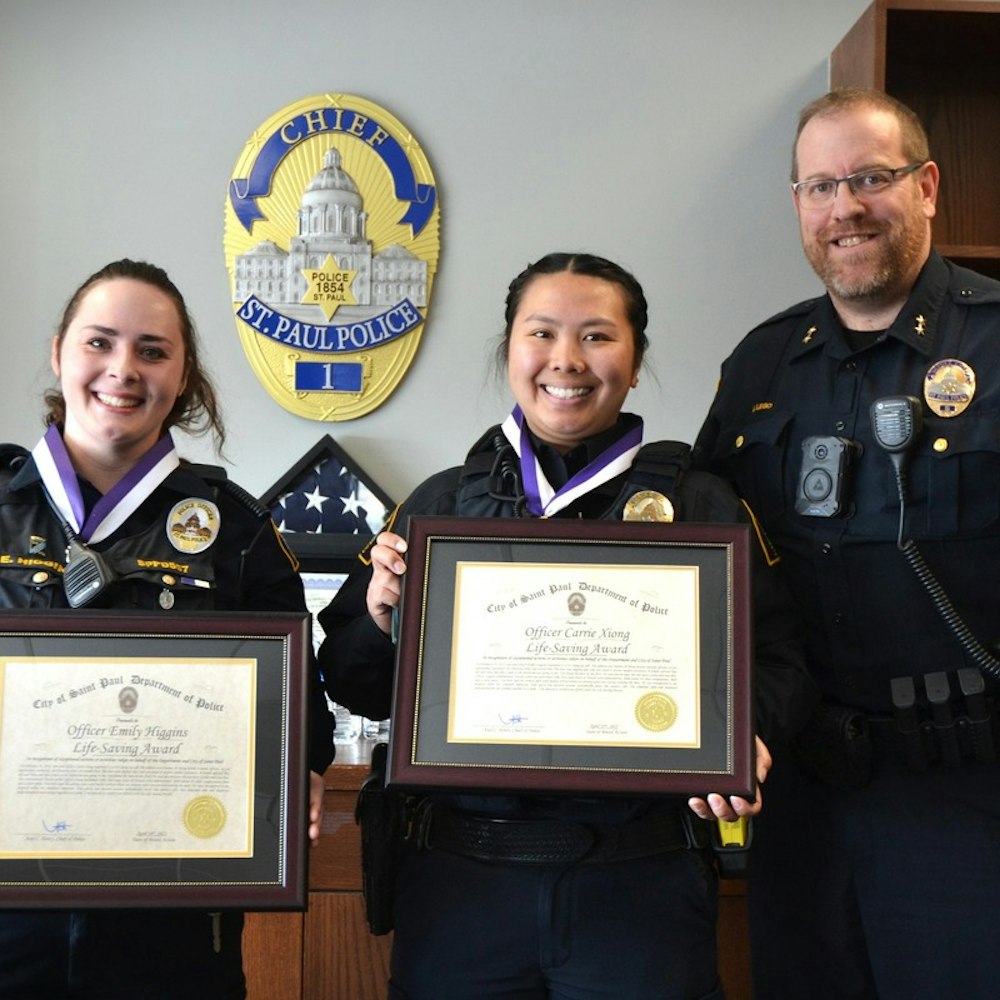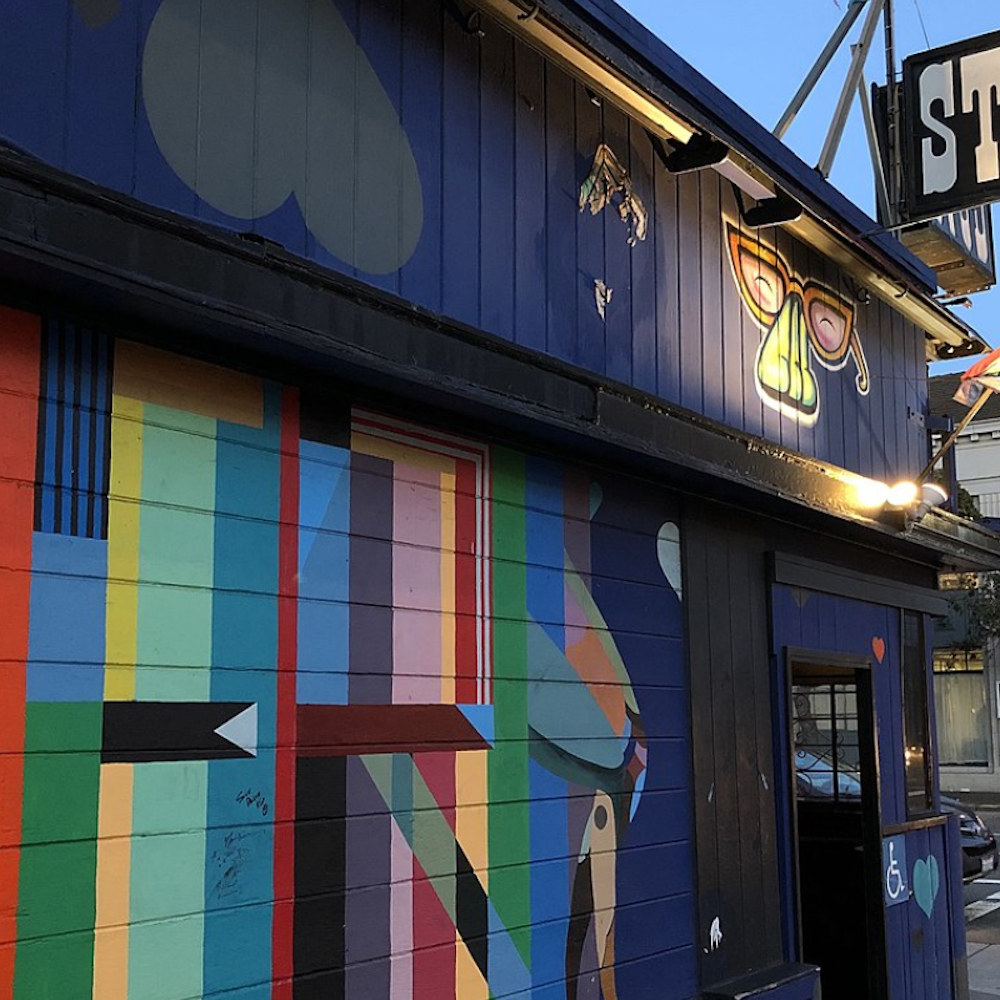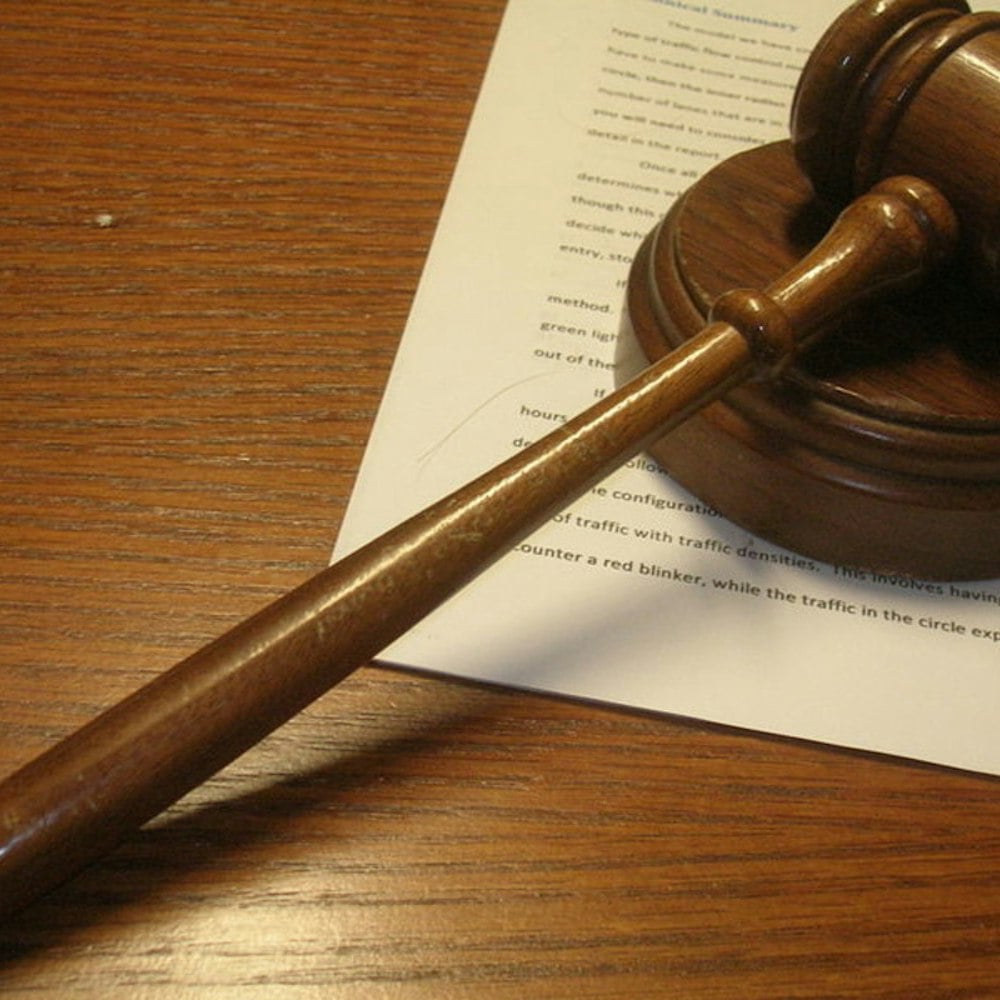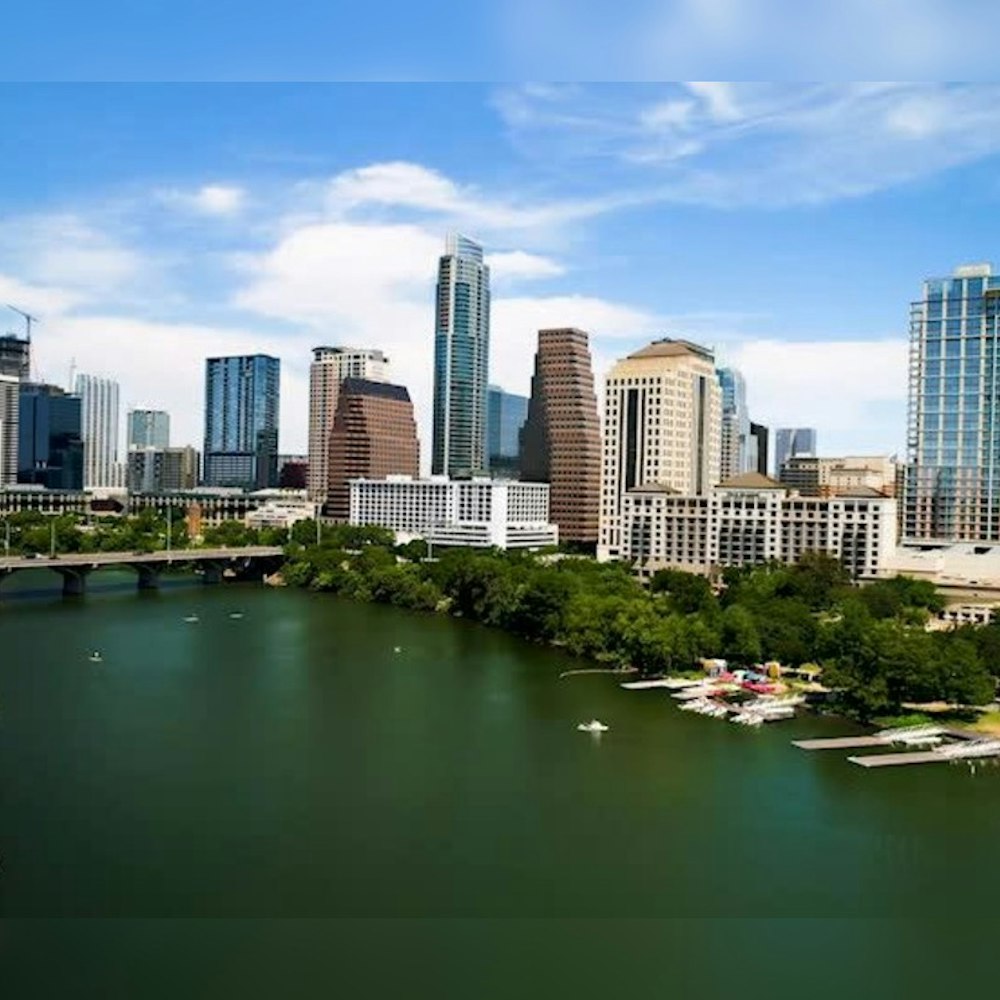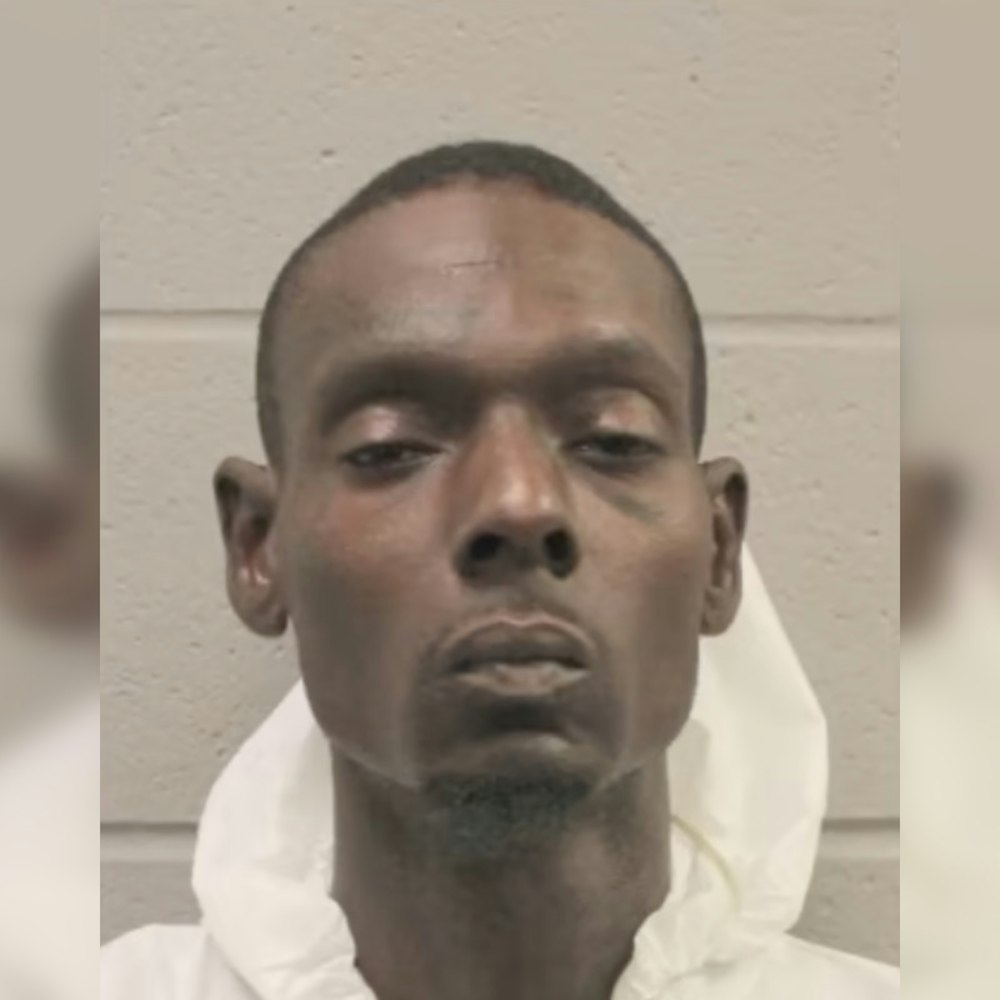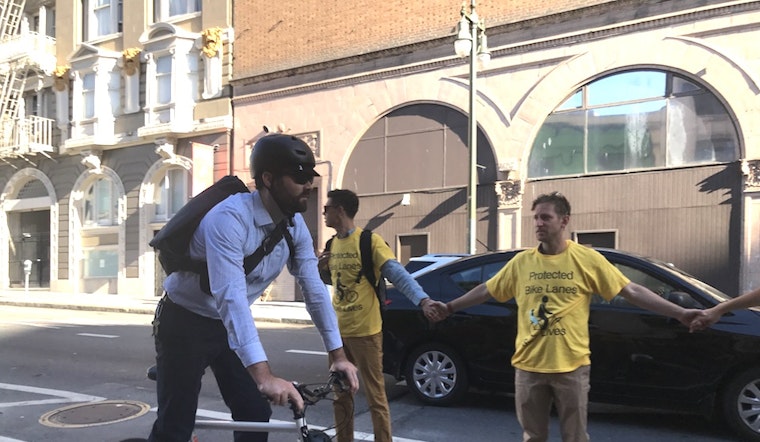
Calling attention to what they say is the city’s failure to protect bike lanes in high-injury corridors, approximately 15 traffic safety advocates formed a human chain this morning on Golden Gate Avenue near Market Street.
Dressed in yellow T-shirts donated by road-safety advocacy group San Francisco Municipal Transformation Agency (SFMTrA), participants stood in a bike lane and joined hands to create a barrier between motorists and cyclists.

“It’s a strong symbol when a bunch of people hold hands in support of a cause,” said organizer Matt Brezina. “What we’re doing is putting our bodies right where we bicycle every day.”
On Golden Gate Avenue, SFMTrA has installed a handful of unauthorized soft-hit posts to make the bike lane more visible. Brezina and other advocates want the city to install posts in bike lanes around the city to keep drivers from using the lanes.
“Our [unprotected] bike lanes are being violated by delivery trucks, Ubers and people driving cars trying to rush through their commute,” Brezina said.
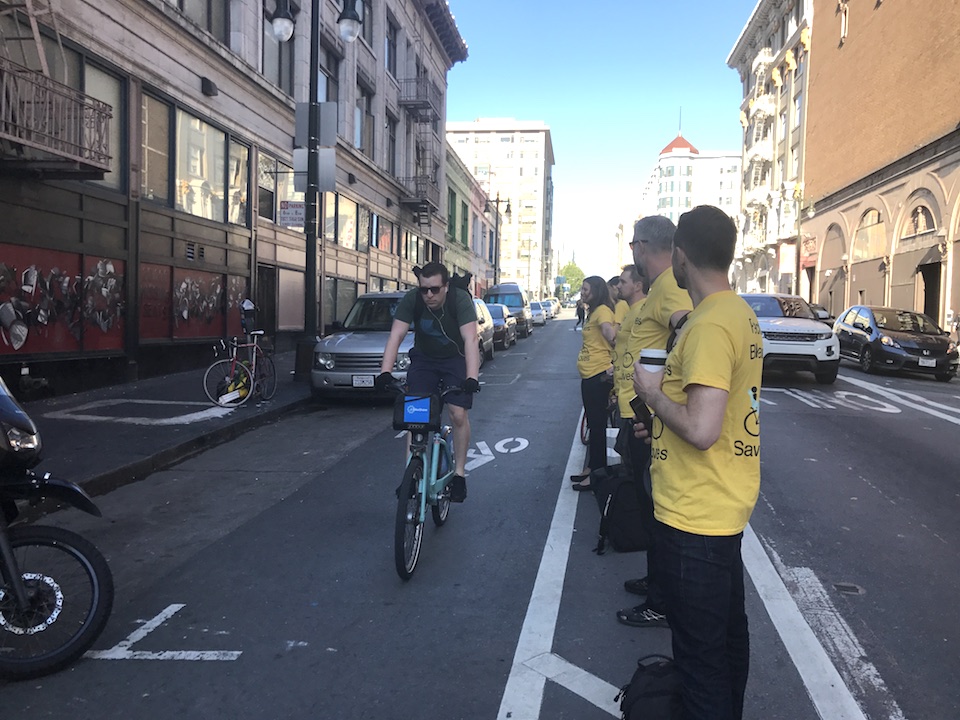
Because there’s no barrier between the street and the bike lane on Golden Gate Ave., Brezina said drivers frequently encroach on cyclists, particularly during rush hours. During our interview, a car entered the bike lane to pass stalled traffic, but protest participants blocked its path and directed it back into a vehicle lane.
“This does feel unsafe to us because it’s not a protected bike lane," he pointed out, "and this is the same place where we’re forced to bicycle every day.”
Muni approved these bike lanes last year as part of the Golden Gate Avenue Safety Project, which eliminated one of three vehicle lanes between Polk and Market to create a bike lane buffered by a painted sharrow. In June 2016, Muni spokesperson Ben Jose said safe-hit posts would also be installed, but as of today, only SFMTrA's posts are in place.
“I think we might do this in more places around the city and target areas that need protected bike lanes,” Brezina said, noting that Golden Gate Ave. is part of San Francisco’s High Injury Network, the 12 percent of city streets where 70 percent of all traffic collisions occur.
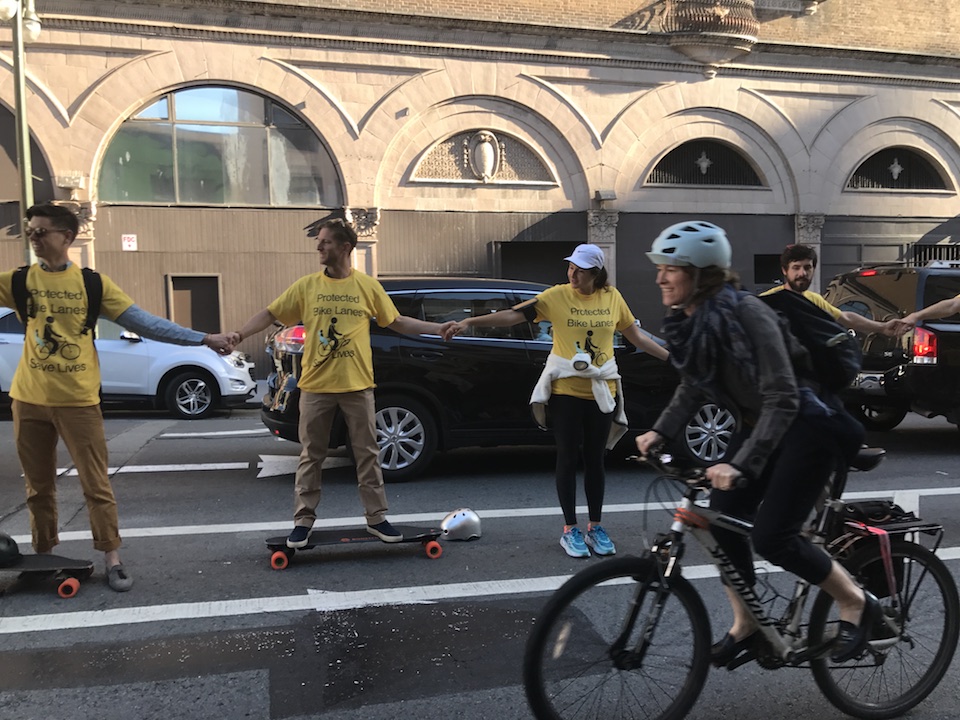
Last month, Muni proposed scaling back a parking-protected bikeway on Turk Street—another corridor in the High Injury Network—to a paint-buffered bike lane, similar to the one on Golden Gate Ave. The change was proposed after fire department representatives said the new configuration made the street too narrow for emergency vehicles.
The changes to Turk Street’s bike lanes have been widely panned by the San Francisco Bicycle Coalition, as well as Supervisor Jane Kim. As a result, SFMTA is now studying alternate means of adding a protected lane to Turk St.
“We have a dearth of these,” said Brezina, “but if you go to New York, the avenues are lined with parking-protected bike lanes.”
As of last year, San Francisco had 125 miles of bike lanes. Of that, 14 miles use paint or plastic posts for separation, while 13 miles have parking or concrete medians as a divider.
In 2014, bicycles comprised 4.4 percent of all daily commutes.
Tomorrow, SFMTA’s board will meet to discuss safety improvements proposed as part of the Upper Market Street Safety Project. Under consideration are two new blocks of parking-protected bike lanes.
“We need to show that there’s support for creating safe streets for all road users,” said Brezina. “It will take so much effort to enforce these things."



